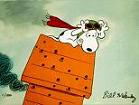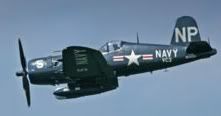Big B
Posts: 4870
Joined: 6/1/2005
From: Old Los Angeles pre-1960
Status: offline

|
Now that I have caught up to John and Steve on the sauce - this has been bugging me.
In an old WitP thread we discussed (endlessly) Zero Vs Wildcat F4F.
At one point I broke form the Allied fanboy orthodoxy ranks and offered the suggestion that - after reading Lundstrom's "The First Team", - it became clear to me that Japanese Doctrine was superior to Allied Fighter Doctrine of "Finger Four" in 1942 (borrowed from the Luftwaffe) and was largely responsible for early war successes of the A6M Zero vs Allied Fighters.
To whit - the Japanese chose elements of 6 fighters as opposed to the Allies choice (excluding British Vics) of 4 fighter elements. I extrapolated that in any 'gunfight' the side that brings the most holds an advantage...at the very least - is never at a disadvantage for having more guys in the fight (excluding the factors of who has radios - etc).
Well, after reading up on Korean War Air Combat, it surfaces again that during the period of 1951-1952 when the Soviets fielded their best formations of seasoned WW2 pilots - the Soviets had their greatest success against the F-86 Sabres.
In no small measure was their success helped by flying fighters in formations of 6 opposed to 4.
There were two Jimmy's in the USN Fighter ranks in early 1942 that proposed tactics changes...Jimmy Thatch (who wanted to impose his Finger 4 weave) and Jimmy Flatley (who proposed 6 aircraft elements after Coral Sea). We adopted Thatches Weave and Finger Four Schwarm tactics of the Luftwaffe. Flatley propose 3x pairs of Twos - the same as the Russian "Honchos" adopted in Korea.
I find it ironic that the 6 plane flight proved superior in Korea - after Flatley proposed it in 1942...
http://acepilots.com/russian/rus_aces.html
quote:
So, why did the Russian pilots in Korea scored so high? It is an interesting question, and it has more than a possible answer. One of them is because -at least in 1951- they were using better tactics:
The Soviet fighters were guided to the air battlefield by good ground control, which directed them to the most advantageous position.
The MiG-15s always operated in pairs, as part of a team called "the sword and the shield," with an attacking leader ("the sword") covered by a wingman ("the shield").
The squadrons operated in 6-plane groups, divided in 3 pairs, each composed of a leader and a wingman:
The first pair ("the sword pair") of MiG-15s attacked the enemy Sabres.
The second pair ("the shield pair") protected the first pair.
The third pair remained above, with a panoramic view of how the battle evolved, supporting the "sword pair" or the "shield pair" depending the situation. This pair had more freedom than the others, because it could also attack targets of opportunity, such as lone Sabres that had lost their wingmen.
Essentially - this is exactly what Flatley proposed before Midway...but Jimmy Thatch won the debate...
Edit: So what I am suggesting is - the success of the A6M Zero in early 1942 was much more attributable to their tactics and numbers in every engagement - than to irreconcilable differences of stats of individual fighters encountered.
B
< Message edited by Big B -- 9/25/2014 5:07:16 AM >
_____________________________
|
 Printable Version
Printable Version























 New Messages
New Messages No New Messages
No New Messages Hot Topic w/ New Messages
Hot Topic w/ New Messages Hot Topic w/o New Messages
Hot Topic w/o New Messages Locked w/ New Messages
Locked w/ New Messages Locked w/o New Messages
Locked w/o New Messages Post New Thread
Post New Thread